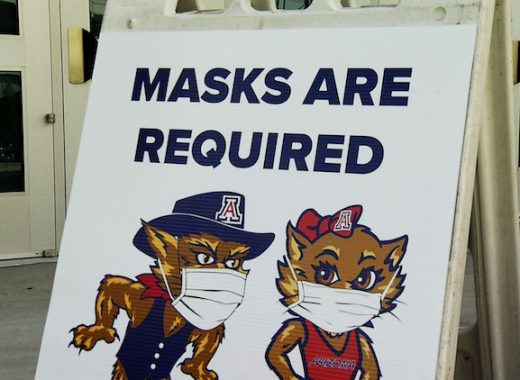The Plastic Chemicals You Need to Know About
By the time you open a yogurt container, the food has already undergone a lengthy journey before reaching your spoon. From cow to processing to packaging and finally to store shelves. However, at every stage, there is a possibility for contaminants to enter.
An ingredient that is not wanted or expected is known as a plasticizer, which is a chemical used to increase the flexibility and durability of plastic. In today’s world, plasticizers, often referred to as phthalates, can be found in almost every individual, along with other plastic chemicals like bisphenols (e.g. BPA). These chemicals have been associated with a wide range of health issues, even at low levels, according to various studies.
Over the course of 25 years, Consumer Reports has conducted multiple investigations into the presence of bisphenols and phthalates in food and food packaging. In their latest tests, a wider range of food products was examined to determine the actual consumption of these chemicals by Americans. The results showed that a significant amount of bisphenols and phthalates are still present in our food, despite growing concerns about their potential health risks. After testing nearly 100 foods, the findings reveal the widespread presence of these chemicals.
The results regarding phthalates are alarming as Consumer Reports discovered their presence in nearly all of the food samples they examined, frequently at elevated concentrations. The packaging type did not seem to have an impact on the levels, and there was no specific type of food, such as dairy products or prepared meals, that was more prone to containing them.
For instance, during their research, they detected elevated amounts of phthalates in various items such as Del Monte’s sliced peaches, Chicken of the Sea’s pink salmon, Fairlife’s Core Power chocolate milkshakes with high protein, Yoplait’s low-fat yogurt in Original French vanilla flavor, as well as certain fast food items like Wendy’s crispy chicken nuggets, a Chipotle chicken burrito, and a Burger King Whopper with cheese. Even organic products were not exempt from this issue: the highest levels of phthalates were actually found in a can of Annie’s Organic cheesy ravioli.
However, certain products displayed significantly lower levels compared to others. For instance, a serving of Pizza Hut’s Original Cheese Pan Pizza contained only half the amount of phthalates compared to a similar pizza from Little Caesars. It was also observed that levels varied among products within the same brand. For example, the Chef Boyardee Big Bowl Beefaroni pasta in meat sauce had less than half the level of phthalates compared to the company’s Beefaroni pasta in tomato and meat sauce.
There is a considerable issue at hand, as there are numerous methods through which these substances find their way into our meals.
Initially, there were attempts to restrict contact with these compounds through packaging. However, it has become evident that phthalates, specifically, can also seep into food through the plastic used in tubing, conveyor belts, and gloves during food processing. Furthermore, these chemicals can directly infiltrate meat and produce through polluted water and soil.
The utilization of these chemicals in food production is not heavily regulated, and there are no mandates for manufacturers to test foods for their presence. However, the guide provides valuable information on the methods through which plasticizers can contaminate food, ways to minimize exposure, and potential improvements that the industry and regulators can implement to enhance the safety of our food.
The Issue With Chemicals in Plastic
There are various reasons for concern regarding the presence of bisphenols and phthalates in our food.
According to recent research, there is evidence that they have the ability to disrupt the endocrine system, which can interfere with the production and regulation of hormones such as estrogen. This disruption, even if minor, can lead to a higher likelihood of experiencing various health issues such as diabetes, obesity, cardiovascular disease, certain types of cancer, birth defects, premature birth, neurodevelopmental disorders, and infertility.
According to experts these issues often take a long time to arise, often spanning multiple decades. He compares it to a plane crash where everyone dies at once, but in this case, the individuals affected may pass away gradually over many years.
A pressing issue is the widespread use of plastic in both food and other products, making it impossible to completely avoid exposure to its chemicals. While the human body is efficient at removing bisphenols and phthalates, continuous contact with them results in their quick absorption into our blood and tissue. Furthermore, plasticizers have the ability to easily seep out of plastic and other materials. Moreover, the detrimental effects of these chemicals may accumulate over time, potentially increasing health risks even with minimal exposure.
The presence of these chemicals in our food supply makes it challenging to pinpoint specific adverse health effects, such as heart attacks or breast cancer. This also poses a challenge for regulators in setting safety standards for food. Experts believe the initial step is to determine the extent of these chemicals in our food supply. Once this is established, we can then formulate strategies, both at a societal and individual level, to reduce our exposure to these chemicals.
Elevated Risks Despite Low Levels
In order to determine the extent of the issue, CR conducted tests on a diverse selection of food products, packaged in various ways.
Their study involved the examination of 85 different types of food, with each type being tested through two or three samples. Their analysis focused on identifying common bisphenols and phthalates, as well as other chemical substitutes that are often used. The selection of food items included prepared meals, fruits and vegetables, milk and dairy products, baby food, fast food, meat, and seafood, all of which were packaged in various forms such as cans, pouches, foil, and other materials.
The recent information on BPA and similar bisphenols provided some sense of relief. Though they were found in 79 percent of the examined samples, their levels were significantly lower compared to their previous BPA test in 2009. This indicates that there may be progress in addressing bisphenols.
Unfortunately, there was no positive update regarding phthalates. Their research revealed their presence in all food items except for one (Polar raspberry lime seltzer). Additionally, the levels detected were significantly higher than those of bisphenols.
It can be challenging to establish a suitable limit for the presence of these substances in food. Currently, governing bodies in the United States and Europe have established thresholds specifically for bisphenol A (BPA) and a select few phthalates. However, the amounts of these substances found in the food tested by Consumer Reports did not surpass these set limits.
According to Tunde Akinleye, the CR scientist in charge of CR’s tests, numerous thresholds lack accuracy in representing the latest scientific information and may not provide sufficient protection against all potential health consequences (Akinleye, 2021). In light of this, he expresses discomfort in endorsing these levels as safe (Akinleye, 2021).
According to Ami Zota, ScD, an associate professor of environmental health sciences at Columbia University Mailman School of Public Health in New York City, the approval of these chemicals in food is not based on evidence. Zota, who has researched the dangers of phthalates, criticizes this decision.
One of the extensively studied phthalates is DEHP, which has been associated with health concerns such as insulin resistance, high blood pressure, reproductive issues, early menopause, and other issues. These studies, including those cited by the American and European regulators, have found evidence of these concerns even at levels lower than the prescribed limits. In their tests, DEHP was the most prevalent phthalate, with over 50% of the products exceeding the levels linked to health problems in research.
According to Akinleye, the multitude of sources from which these chemicals are obtained, including food, as well as other items like printed receipts and household dust, makes it challenging to determine a definitive “safe” limit for a single food. As our understanding of these chemicals, and their prevalence, grows, it becomes increasingly apparent that they can have detrimental effects on our health even at extremely low levels.
Consumer Reports Findings on the Presence of Plastic Chemicals in Food
The list below ranks the 67 grocery store foods and 18 fast foods that were tested by CR according to their total phthalates per serving. While there is no established safe level for these chemicals, it is generally preferred to have lower levels. Their findings indicate that although phthalates are common in our food supply, the levels can greatly differ even among products that seem similar. Therefore, their chart can assist in selecting products with lower levels in certain cases.
DRINKS
Amount of phthalates in each serving (measured in nanograms)*
Lemon Brisk Iced Tea (can)
7,467
The plastic version of Coca-Cola Original
6,167
Lipton’s Diet Green Tea Citrus is available in a plastic bottle
4,433
Plastic bottle of Poland Spring’s 100% natural spring water.
4,217
Plastic Juicy Juice Apple 100% Juice
3,348
A can of Pepsi Cola
2,938
Apple Juicy Juice made with 100% juice, packaged in a cardboard box
2,260
The plastic bottle of Gatorade Frost Thirst Quencher in Glacier Freeze flavor
1,752
Canned beans
Quantity of phthalates per serving (nanograms)* in total
Canned Hormel Chili with Beans
9,847
A canned product called Bush’s Chili Red Beans Mild Chili Sauce
6,405
The Original Baked Beans (can) from Great Value at Walmart offer excellent value
6,184
Original Bush’s Baked Beans (in a can)
3,709
Sauces and Flavorings
Amount of phthalates per serving (nanograms)*
The plastic container of Mrs. Butterworth’s Original Syrup
1,010 items
Can of Hunt’s Tomato Ketchup
574
The original plastic bottle of Sweet Baby Ray’s Barbecue Sauce
22
Milk Products
Amount of phthalates in each serving (measured in nanograms)*
The chocolate flavored Fairlife Core Power High Protein Milk Shake is packaged in plastic
20,452
The plastic container holds SlimFast’s creamy chocolate high protein meal replacement shake
16,916
French Vanilla flavored Yoplait Original low-fat yogurt in plastic packaging
10,948
Whole Milk from Tuscan Dairy Farms in a plastic container
10,932
Vanilla ice cream from Ben & Jerry’s is sold in a paperboard carton
6,387
Organic Whole Milk from Wholesome Pantry (ShopRite) in a carton
4,620
The vanilla homestyle ice cream in a plastic container from Great Value (Walmart) offers excellent quality
3,068
Chocolate Jell-O Pudding Snacks, in their original form, are packaged in plastic
1,756
Sharp Sargento Cheddar Cheese, sliced and made with natural ingredients, packaged in plastic
1,481
Butter, Land O’Lakes Salted, is packaged in a paper wrap and cardboard
581
Quick Service Restaurants
Amount of phthalates per serving (in nanograms)*
Wendy’s paperboard packaging for their Crispy Chicken Nuggets
33,980
The aluminum foil-wrapped Chicken Burrito from Moe’s Southwest Grill
24,330
Aluminum foil-wrapped Chipotle Chicken Burrito
20,579
The Whopper With Cheese (paper) at Burger King
20,167
The paper bag contains Burger King’s chicken nuggets
19,782
Wendy’s Dave’s Single With Cheese is served in a wrapper made of a combination of aluminum foil and paper
19,520
The Quarter Pounder With Cheese from McDonald’s is often referred to as “cardboard”
9,956
Wendy’s paperboard packaging for their Natural-Cut French Fries
8,876
Paperboard is used for Burger King’s classic French fries
8,512
The Chicken McNuggets from McDonald’s (made from cardboard)
8,030
The Classic Cheese Pizza from Little Caesars (in a cardboard box)
5,703
French Fries from McDonald’s (made with paperboard packaging)
5,538
The Hamburger Patty in McDonald’s Quarter Pounder varies in size.
5,428
The Chicken Burrito from Taco Bell is served in a paper wrap.
4,270
The Cheese Pizza from Domino’s, served in a cardboard box, is made with hand-tossed dough
4,356
The Hamburger Patty from Wendy’s, known as Dave’s Single, may vary in its ingredients
3,629
The Hamburger Patty from Burger King’s Whopper comes in a variety of options.
2,870
The Original Cheese Pan Pizza from Pizza Hut comes in a cardboard box.
2,718
Types of Grains
Phthalates in each serving (measured in nanograms)*
The original paper/cardboard General Mills Cheerios is available
10,980
10 Minute Boil-in-Bag White Rice (paper/cardboard) for Success
4,308
Farmhouse Hearty White Bread by Pepperidge Farm comes in a plastic bag
2,184
Food for Infants
The amount of phthalates in each serving (measured in nanograms)*
The Harvest Turkey Dinner by Gerber is a mealtime option for babies, served in a glass container with a lined lid
4,267
Formula powder for infants, based on milk, by Similac Advance (in a can)
4,202
The pouch of Beech-Nut Fruities contains a tasty combination of pear, banana, and raspberries
2,826
Baby Rice cereal from Gerber packaged in plastic
1,599
The product, Happy Baby Organics Clearly Crafted Banana & Strawberries, comes in a glass container with a lined lid
1,300
Organic milk-based infant powder formula with iron (plastic) is designed for happy babies
977
The pouch contains Gerber Organic for Baby, with a mixture of apple, zucchini, spinach, and strawberry
706
Meat and Poultry
The amount of phthalates in each serving (measured in nanograms)*
Ground Chicken Breast by Perdue, packaged in a foam tray and covered with plastic wrap
9,985
Ground pork from Trader Joe’s with a composition of 80% lean and 20% fat, packaged in a foam tray and covered with plastic wrap
5,503
Sweet Italian Sausage from Premio Foods, packaged in a foam tray and covered with plastic wrap
4,725
Corned Beef by Libby’s (canned)
4,088
Plastic packaging of Bar S Chicken Jumbo Franks
3,295
Paperboard wrapped in plastic contains 80% lean and 20% fat ground beef from Stop & Shop
2,729
Plastic-packaged Applegate Naturals Oven Roasted Turkey Breast
2,295
Premium Chunk Chicken Breast in a can, by Swanson White
1,376
The plastic-wrapped Johnsonville Smoked Sausage Beef Hot Links are available for purchase
912
Fruits and vegetables that have been prepared for consumption and sold in a packaged form.
Amount of phthalates per serving (nanograms)*
Canned Del Monte Peaches Sliced and preserved in 100% natural Fruit Juice
24,928
The product in question is Green Giant Cream Style Sweet Corn, which is available in a can
7,603
Italian Green Beans from Del Monte Fresh Cut (canned)
5,264
Progresso’s Vegetable Classics Soup, featuring a medley of vegetables, comes in a convenient can
2,888
Green beans that are freshly cut and packaged in a plastic bag by Birds Eye Steam Fresh
907
Tomato Sauce by Hunt (canned)
680
Ready-to-Eat Dishes
Amount of phthalates per serving (measured in nanograms)*
The canned Annie’s Organic Cheesy Ravioli
53,579
The product being offered is Chef Boyardee Beefaroni, which is a type of pasta served in a tomato and meat sauce, conveniently packaged in a can
13,628
Plastic and paperboard are used to make the Banquet Chicken Pot Pie
12,494
Classic Chicken Noodle Soup from Campbell’s Chunky brand (in a plastic packaging)
6,768
This product, Beefaroni Pasta in Meat Sauce, is a Chef Boyardee Big Bowl that comes in a plastic packaging
5,064
Chicken Noodle Soup by Campbell’s (in a can)
2,848
A pizza called Red Baron Brick Oven Cheese-Trio Pizza made from paperboard
1,707
Seafood is a type of food that comes from the ocean.
Amount of phthalates per serving (in nanograms)*
Skinless and boneless Chicken of the Sea Pink Salmon in water, canned
24,321
Can of King Oscar Wild Caught Sardines in Extra Virgin Olive Oil
7,792
Canned Snow’s Chopped Clams
4,380
Wild Caught Light Tuna in Water by StarKist (pouch)
1,735
The canned StarKist Chunk Light Tuna in Water is available
1,687
A can of Season Brand Skinless & Boneless Sardines in Water
1,258.
Enhancing Food Safety
Serious worries regarding the potential health hazards associated with these substances have prompted American regulators to significantly restrict their usage in various items – with the exception of food products, as stated by the FDA.
The use of eight phthalates in children’s toys has been prohibited by the federal government. However, apart from the prohibition of BPA in baby bottles in 2012, which was later extended to infant formula cans in 2013, there are no significant restrictions on the use of plastic-based chemicals in food packaging or production. Although the Food and Drug Administration has updated its regulations to disallow certain phthalates in materials that come into contact with food, this was only done after the chemicals were no longer being used. Recently, the agency denied a request from various organizations to ban multiple phthalates used in materials that come into contact with food.
According to a representative from the FDA, they requested the food industry and other parties to supply the agency with more data in 2022 regarding the utilization of plasticizers in any substance that may come into contact with food during the manufacturing process. The agency may utilize this information to revise its safety evaluations of these substances.
According to food safety experts and other individuals, there is a need for the FDA and other regulatory bodies to conduct a thorough reevaluation. Erika Schreder, the science director at Toxic-Free Future, a group advocating for safer products, states that given the hazardous nature of bisphenols and phthalates, they should not be permitted in any food-contact materials.
According to Rogers, both supermarket and fast-food chains, as well as food manufacturers, must take necessary steps to address the issue. They should establish clear targets to decrease and eliminate the use of bisphenols and phthalates in all food packaging and processing equipment across their supply chains.
During their testing, Consumer Reports reached out to specific companies whose products had the highest levels of phthalates per serving. They requested them to provide a response to their findings. However, Annie’s, Burger King, Fairlife, Little Caesars, Moe’s Southwest Grill, Wendy’s, and Yoplait did not respond to their inquiries for comments.
According to Del Monte, Gerber, and McDonald’s, they strictly adhere to current regulations. Gerber also stated that they mandate their suppliers to verify that their food packaging is BPA and phthalate-free. Similarly, Chicken of the Sea also requires its suppliers to confirm that their products and packaging do not contain intentionally added BPA or phthalates. However, they acknowledged that fish often live in water contaminated with phthalates.
In order to promote environmentally-friendly practices, it is crucial for chemical companies to play a more active role in developing safer and sustainable materials. According to Hanno Erythropel, PhD, of the Center for Green Chemistry and Green Engineering at Yale University, it is important to prioritize functionality while also ensuring that the materials are non-toxic, biodegradable, and renewable.
Check out Consumer Reports recommendations for reducing your contact with these substances at the following link: How to Reduce Your Exposure to Plastic in Food and Elsewhere.
Consumers can urge the FDA to immediately take measures in order to safeguard our health. Add your signature to the petition and read the complete document here: https://action.consumerreports.org/cro-20240108-phthlates








